2014 Polaris RZR XP 1000 Review
After weeks of calling Polaris dealerships and searching every place imaginable, I finally got my hands on a stock 2014 Polaris RZR XP 1000 for testing.
Jerry Matthews of Starting Line Products (SLP) was able to loan me his unit and I quickly jumped at the opportunity to put some miles on the new horsepower king – he even joined me for a day of intense testing. Also joining us was Kevin Allred, who owns the RZR XP 900 LE we tested extensively this past summer. The RZR 900 features SLP-tuned clutches for high altitude use, which you can read about here.
Shortly after sunrise we set off for some early morning desert trail riding followed up by an afternoon ride at the St. Anthony Sand Dunes. At both locations, we mirrored the courses from our July shootout between the RZP XP 900 LE and Can-Am Maverick 1000R X rs – minus the timing lights.
We were able to test the new RZR XP 1000 alongside a slightly modified RZR XP 900 LE.
By the end of the day I wanted answers to the following questions: 1) How does the 1000 RZR run against a properly tuned for elevation 900 RZR XP and 2) What 1000 is the best bang for the buck when checking off the “Pros” and “Cons” between the Polaris RZR XP 1000 and Can-Am Maverick 1000R X rs, which was our Shootout winner from July?
Specs
The 29-inch Maxxis Bighorn tires and long-stroke shocks give the RZR XP 1000 ample clearance for ground and bump control.
At the heart of the RZR XP 1000 is a four-stroke double overhead cam (DOHC) twin cylinder electronically fuel injected (EFI) engine with a displacement of 999 cc. Horsepower at sea-level is a projected 107.
The front suspension uses dual A-arms on each side with Walker Evans two-inch needle shocks controlling impact; travel for the front is 16 inches. Out back the rear suspension uses trailing arms with Walker Evans 2.5-inch needle shocks controlling 18 inches of travel.
In comparison to the RZR 900 and Maverick 1000, the RZR XP 1000 has 18 more horsepower than its little brother and six more than the Maverick 1000 X rs. As well, the RZR XP 1000 has 2.0 inches more front travel and 4.0 inches more rear travel than the Maverick 1000 X rs and holds 2.5-inch and 4.0-inch advantages over the RZR 900 front and rear. For ground clearance the RZR XP 1000 has a an extra half inch of clearance compared to both the RZR 900 and Maverick 1000R X rs.
General Desert Trail Riding
With its sea-level clutching, the RZR XP 1000’s horsepower and torque carried the load quite well, but revs stayed between 7600 and 7800 rpm – it was down for the 4800 foot elevation. In the desert the temperature hovered in the low 40s with clear skies and no wind. The sand was quite hard from the night’s low temps, which dipped into the low teens.
Tall 29-inch Maxxis Bighorn tires (3.0 inches taller than the RZR 900 XP LE) rolled across the rocks and ruts with ease, but did break loose on the cold hard sand, as expected; we had to be to keep it gathered in on the slick sand.
COMPARISON: 2013 Polaris RZR XP 900 EPS LE Review
Thanks to those big tires, the RZR XP 1000 did not drop into ruts and grunt out like the RZR 900 and Maverick 1000 X rs. The downside to the 29-inch tires is that they require more power to turn. The payoff here among the Can Am Maverick and RZR 900 is that crevasse travel is simpler, but horsepower is gnawed at. The result is a wash.
The RZR XP 1000 did not experience body roll through the tight chicanes. Drivers railed in slot car fashion on the trails. Both Mathews and I noted that when riding as a passenger we felt secure because the driver, even when riding on edge, held high confidence in the RZR 1000 as it did not body roll like the Maverick 1000R X rs. Admittedly, we did not really notice the Maverick’s body roll until we hustled the RZR 1000 through our desert course. We are going off of memory here, but the RZR with its long chassis, trailing arm rear suspension and Walker Evans shocks benefitted from a body that was stiff through the S-curves. Chalk this up as a win for the RZR XP 1000.
Minimal body roll is a characteristic the RZR XP 1000 has. It is controlled when powering through a corner.
Power steering was a point of debate for the three test riders. I felt it was too sensitive when barreling along at high speeds. The Maverick’s non power steering system favors high speed runs. Given that, I prefer slower – stiffer – steering wheel rotation; I need feedback. This was also a nit we had with the 900 RZR with EPS. For high speed runs, edge goes to the Maverick 1000 without power steering; except in low speed rock and rut crawling conditions.
In drag races between the RZR XP 1000 and the RZR 900 LE with its elevation-tuned clutches, the 900 jumped out to the lead for the first 50 yards, but it was overtaken in rapid fashion by its more powerful sibling.
From our memory, the 900 RZR too would jump the lead on the Maverick 1000R X rs and would hold it off due to the RZR’s lower power-to-weight. Yet, we feel between the two 1000s, the Maverick and the RZR with sea-level clutch calibrations may be dead even. But in reality, handling in the desert and the dunes is more important than 1000-foot speed runs.
We surmise that in high-speed desert riding, the RZR 1000 may pull off the victory due to its minimal body roll. And when in 4WD, the RZR 1000 has minimal drift through the corners. We found we could drive the 1000 RZR ridiculously hard when engaged in 4WD.
General Sand Dune Riding
At the dunes, Mathews and Kevin Allred took to the moguls to check suspension hop. The RZR 1000 was flat and floated well, but we did experience sharp rollercoaster bounces from the rear where it wanted to the lead the front. We were able to gather it in with a quick throttle cut. To that end, the 1000 RZR handled the moguls better than the 900 RZR, and equally well or perhaps a bit better, if memory serves, than the Maverick. But with shock tuning, we can nix plenty of this out for both vehicles.
Called wrapped, the two RZRs chase each other in a sand bowl that has a slope in excess of 30 degrees. The RZR 1000 needs high-altitude clutch tuning to be snappy like the RZR 900. All in all, however, it is a beast.
The Polaris RZR XP 1000 pulled some stupid high marks in the dunes. The sand at the St. Anthony Sand Dunes was cold and hard, which the Maxxis tires hooked too with ease. We did not venture to the famous Choke Cherry hill (we chose to protect the RZR since it was barrowed), but did hit much taller hills that where slightly less in slope. Indeed it climbed and was more than a match for the tall slopes.
COMPARISON: 2013 Can-Am Maverick 1000R X rs Review – Video
When jumping the RZR 1000, it would fly flat like its sibling the 900. At his first attempt, Mathews, relying on his snowmobile jumping skills, chopped the throttle closed when in flight, the RZR 1000 nose dived. With correction, Mathews kept the RZR’s rpm high as he launched and it flew flat and straight. We could not get the Maverick 1000 to hold flat, so flight characteristics favor the big RZR.
As a sand dune buggy the RZR XP 1000 is a delight. Its chassis and suspension received motor torque with assuredness; it is a confidence builder.
In flight and with the throttle pinned, the RZR XP 1000 is flat in the air.
In Conclusion
What would I buy, Maverick 1000 or RZR 1000? The Maverick 1000 X rs comes with beadlock rims and a tough front bumper. It runs between 1K and 2k cheaper than the Polaris.
Recaro-style bucket seats in the RZR are adjustable for leg room, as they are in the Maverick. Power steering comes standard in the RZR, where it is an option in the Maverick. However, even with the addition of power steering, the Maverick is $1000 cheaper than the RZR XP 1000.
The 2014 RZR 1000 has a MSRP of 19,999 where as the 2014 Maverick 1000 X rs has a starting MSRP of $17,999 without dynamic power steering (DPS) and 18,999 with DPS. For the extra money the RZR comes with more horsepower, taller tires, more suspension travel, hard doors (no nets) and slightly more ground clearance. But, is it worth 1K to 2K more? Maybe. Brand loyalty will drive this.
The RZR XP 1000 has long legs. Its A-arm front suspension and trailing arm rear suspension, both with Walker Evans needle shocks, keep the chassis flat.
Performance wise, again by memory, we feel the RZR XP 1000 may have an edge over the Maverick. But, this is a guess based on history and that gut feeling.
We feel the Maverick has better fit and finish, but the RZR has nice amenities like a water-tight compartment for a cell phone/GPS/MP3 player.
If you are curious if consumers will pony up $20,000 for a Sport UTV, the answer seems to be an overwhelming yes. Every Polaris dealer we contacted to secure a RZR XP 1000 for a day scaring and tearing the countryside had sold its allotment of units before they took even took delivery of them. Customers, it seems, did not haggle price. And that is the allure Polaris has; folks want a RZR and motor displacement trumps cost.
If it were my own money I’d go with Maverick with DPS. However, if wanted a product that is freakishly stable and that I know every Polaris aftermarket hot shop is going to build performance products for, then the RZR 1000 is my purchase.
With that, we are badly itching to have the 2014 1000 RZR knock heads with a 2014 Maverick 1000 X rs and 2014 Arctic Cat Wildcat X Limited. Our fingers are crossed.
A Dissenting View
I often hear “bigger is better.” In reality, whether bigger is better depends on what we are evaluating. In terms of the new Polaris 1000 RZR XP, I learned bigger is indeed better. Bigger motor, bigger tires, bigger (or shall we say more?) suspension travel and bigger cockpit. The list goes on.
The Polaris RZR XP 1000 is a very different vehicle, not a simply makeover from the RZR XP 900.
Even when coming off-camber, the RZR XP 1000 will land on both side tires and settle into a landing that is driver-friendly.
We took out the 1000 RZR to our desert proving grounds and then to the famous St. Anthony Sand Dunes. As a benchmark, we put it up against a very strong running 900 RZR.
First impressions about the 1000 RZR; to start out with, nothing awkward about seat, seating position, steering wheel height, doors and seatbelt – these all felt just right. Two thumbs up for seat design.
COMPARISON: 2012 Arctic Cat Wildcat 1000 Review – Video
Power from the one liter mill is impressive, though I would say not an earthshaking difference from the 900 or the Can-Am Maverick 1000R X rs, but stronger all the way through.
What put the biggest smile on my face was the suspension. The long travel combined with the 29-inch tires was flat out impressive. The front end feels much like the 900, but combined with the long travel rear suspension, it only took a short distance to learn this was a whole new animal.
When the RZR XP 1000 is locked down in on-demand 4WD it reduces drift, it allows the driver to stay fit and fast through the corners.
The 1000 RZR corners with minimal body roll. It doesn’t take long to gain and have confidence in this vehicle. Its overall looks screams performance and its actual performance matches it. Just four month ago we conducted a comparison shootout between the Polaris RZR 900 and the Can-Am Maverick 1000R X rs; we know these vehicles very well. At this point based on early impressions, I am going to go out on a limb and issue a spoiler alert to say this Polaris RZR XP 1000 is in a class all its own.
Yes, bigger is better.
More by ATV.com Staff



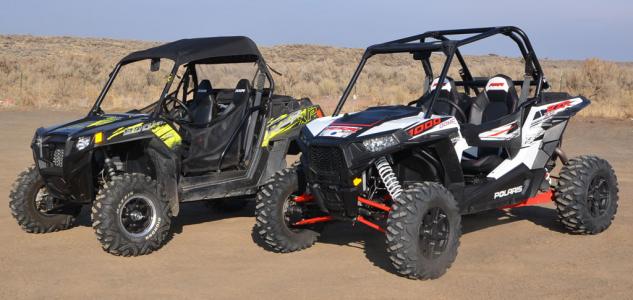







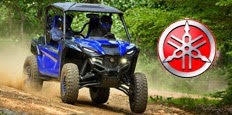







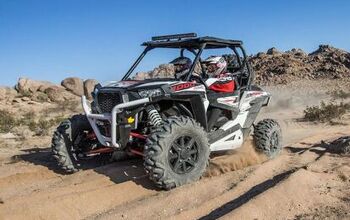
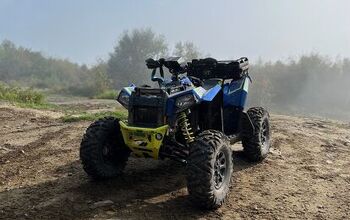
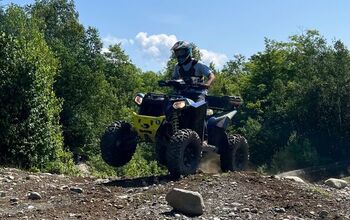
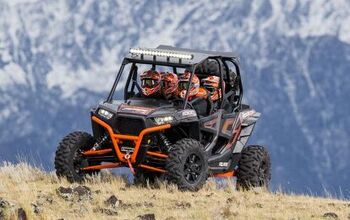
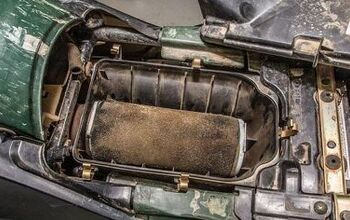
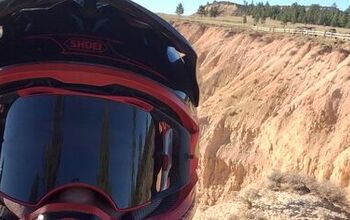
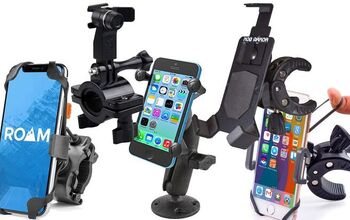
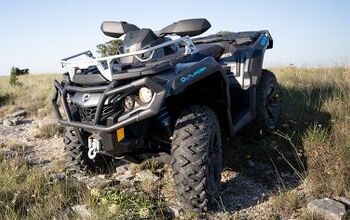
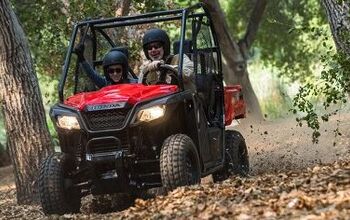
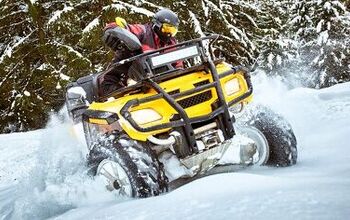
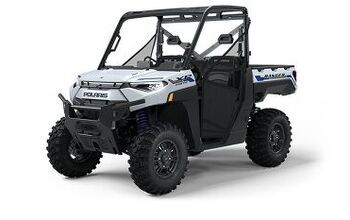
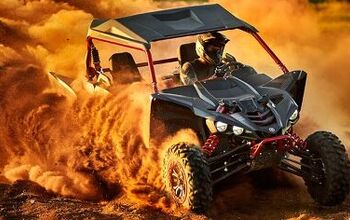


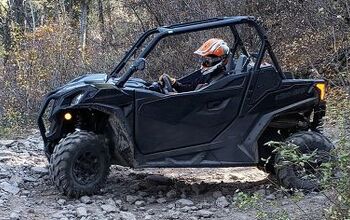
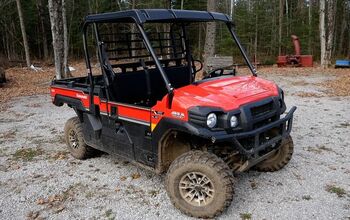
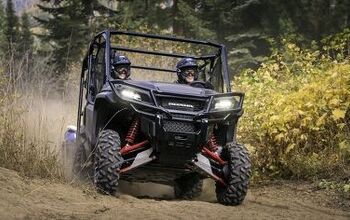
Comments
Join the conversation